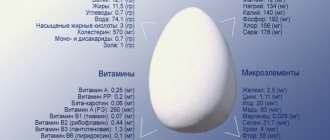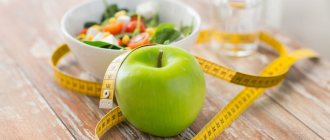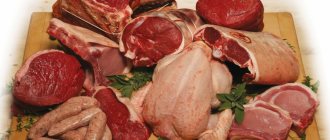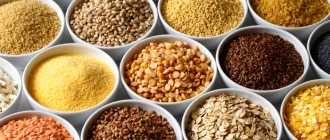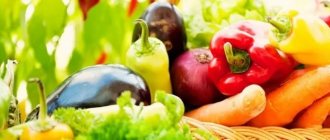The problem of obesity needs to be addressed. Experts have developed special techniques based on proper nutrition, exclusion of certain foods, physical activity, and medications. Some of them provide stable weight loss without harm to health, others, on the contrary, can cause exacerbation of chronic diseases, new health problems, and pathologies.
A relatively new approach to weight loss is a gluten-free and dairy-free diet. What it is? How safe is it for the body? How does it affect him? Let's look at it in more detail in this article.
What is gluten
Content:
- What is gluten
- What is dangerous and why is gluten needed?
- The essence of a gluten-free diet
- Who is a gluten-free diet suitable for?
- What can you eat
- Prohibited Products
- Gluten-free diet for weight loss
- Pros and cons of a gluten-free diet
- Gluten-free diet reviews
- conclusions
Gluten, or otherwise gluten, is a special type of protein found in the seeds of cereal crops. Most of it is found in wheat, barley and rye. It is thanks to him that the dough made from the flour of these cereals turns out so elastic, soft and plastic. After all, without gluten it would not have such stickiness. Because the main property of this product is to glue substances into a homogeneous mass.
Benefit
Eliminating or minimizing gluten intake for weight loss has a number of advantages over other weight loss methods:
- provides a fairly balanced and varied diet with low calorie content;
- does not require strict portion control;
- is not too debilitating or stressful for the body;
- allows you to lose up to 4 kg of weight per week with minimal restrictions.
In addition, a gluten-free diet helps not only normalize weight, but also improve health, cleanse the body, improve appearance and well-being.
What is dangerous and why is gluten needed?
At its core, the gluten-free diet was specifically created for people suffering from celiac disease, an autoimmune disease caused by damage to the small intestine from foods that contain gluten. Moreover, if previously such a disease was quite rare, in the modern world the number of people genetically predisposed to this disease has increased significantly. For such people, gluten-free therapy is simply vital, because as soon as you give up foods, you can improve forever, and sometimes even save your life.
Quite often, those who are allergic to gluten or suffer from gluten intolerance follow a gluten-free diet. This can be detected through laboratory tests, as well as by observing the body’s reaction. For example, when eating bread, such a person may experience flatulence or discomfort in the abdominal area. Also, often symptoms of gluten intolerance are anemia, rapid weight loss and frequent bowel movements.
However, gluten is a natural protein that gives baked goods their characteristic fluffiness and flavor. In the absence of it, synthetic dyes and preservatives are often added to baked goods to improve its taste. Accordingly, the less gluten a product contains, the worse its quality and the much lower content of nutrients. One thing that can be said in its favor is that previously this protein was practically invisible. Nobody paid attention to him, except for the two percent of people who suffered from celiac disease. For the remaining 98%, it was completely harmless and did not pose any danger. However, now more and more people are abandoning it, as it is considered a fashion trend and promotes a healthy lifestyle, which is also in trend now.
Expert opinion
The question of the effectiveness and usefulness of a gluten-free diet remains open.
Doctors have not yet come up with a clear solution regarding gluten-free weight loss. Because the method does not always contribute to weight loss.
As mentioned above, uncontrolled eating of foods such as buckwheat, rice, and corn can cause the opposite result.
Sometimes the manufacturer, due to the avoidance of gluten in the composition, increases the proportion of fat or sugar, which is harmful to the body.
Depriving the body of cereals also limits the supply of certain minerals and useful structures: iron, folic acid, calcium, vitamins B1 and B3, fiber.
Thus, the absolute exclusion of gluten requires the accompaniment of multivitamins.
Doctors insist on professional diet preparation by a nutritionist in order to avoid a deficiency of some substances or an excess of other substances.
Important! If the goal is weight loss and the body normally accepts gluten, then such a diet is recommended on a gentle basis. That is, some of the unauthorized food must still be consumed.

The essence of a gluten-free diet
The essence of this diet is to completely eliminate from the diet all foods that contain gluten. This approach will help improve the functioning of the digestive system and normalize metabolic processes in the body. Which will undoubtedly be practically the first step towards healing the body and will be very effective for losing weight.
A complete transition to gluten-free products will lead to a deep cleansing of the intestines and the removal of dangerous and harmful toxins that have accumulated in the body by this time.
A gluten-free diet offers enough variety in your diet so that those who choose to follow this lifestyle will not experience the negative feelings that often accompany weight loss, such as hunger or exhaustion.
Example of a gluten-free menu
Here is a version of a weekly gluten-free menu. This is not the only mode, but only a help to get started.
There is no need to adhere to this plan unquestioningly and regularly. This is the basis for developing an individual menu based on personal preferences.
What to fuel up in the morning?
Breakfast is the most important element of the diet. It could be a cottage cheese casserole made with corn flour; porridge (buckwheat, millet) with sour cream, yogurt, berries or fruits.
Unsweetened morning variation - boiled wild (or brown) rice, chicken fillet, herbs and vegetables.

Lunches.
Soups are welcome. For example, chicken noodles (corn or buckwheat noodles), spinach soup with beef broth, rural vegetable soup (similar to Italian minestrone) with carrots, herbs, peas, borscht.

For the main course: baked beef with herbs and tomatoes with boiled potatoes; millet porridge with fried fish breaded (starch or corn flour); vinaigrette with boiled chicken/veal; carrot cutlets.

Evening reception.
A light dinner is necessary to make it easier for the body to digest food at night.
Therefore, we cook either pilaf with green salad, or baked potatoes with carrot salad (for example, in Korean), or bake fish medallions with onions in the oven.

What to eat?
During the day, small snacks are required so that during the main meals you do not overeat and do not overly burden the digestive system.
So, during a break you can eat corn toast (or bread) with cottage cheese or cheese; a piece of rice and fruit casserole; yogurt and a handful of berries/fruits.
Combine, change and interpret dishes presented on the menu to avoid constancy and monotony in your diet. Food contains various minerals that people need in their own way.
Prepare your usual dishes, replacing gluten-containing ingredients with a safe analogue. For example, the same pancakes and pancakes turn out amazing from buckwheat, rice or corn flour.

Who is a gluten-free diet suitable for?
First of all, a gluten-free diet is necessary for people suffering from a digestive tract disease such as celiac disease. There is also an allergy to gluten, or gluten intolerance. With this condition, people experience frequent migraines, bowel dysfunction, flatulence, cramps and bloating. Introducing gluten-free products into your lifestyle and daily menu will significantly improve your condition and relieve adverse symptoms.
Eating them without medical indications, for the purpose of losing weight, will not bring tangible benefits to the body, moreover, it can significantly hit your pocket, since according to statistics, such products cost 2 times more than those containing this protein.
It is now quite common to believe that a gluten-free diet is very effective for autism, schizophrenia and other neurological diseases. But there is no reliable evidence of this fact yet.
Modern statistics of cereal consumption in Russia
Times have changed, but our taste preferences remain the same.
- Bread, pasta and cereals occupy second place in our diet.
- 94% of Russians consume large amounts of bread every day, although the Public Chamber claims that current bread is not a high quality product.
- 77% of Russian residents have pasta and cereals in their daily diet.
- Due to the relative cheapness, dumplings in “coats” made from wheat flour prevail in semi-finished meat products.
At the same time, almost 60% of Russians strive to follow the principles of healthy eating. 63% believe that recommendations for eating healthy foods should be heeded. Other people believe that “the body itself requires” exactly the food that is beneficial to it. This is how they justify their abuses at the table.
This approach to catering results in the following figures:
- Only 22% of the country’s residents have no health problems;
- 44% are overweight;
- 26% have problems with skin condition;
- 24% had disorders of the digestive tract;
- 20% are allergic, including to food.
What can you eat
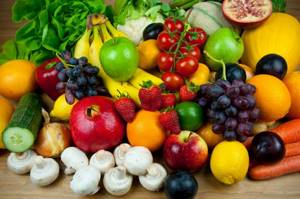
Gluten-free products are quite common and familiar to everyone. These include:
- fresh nuts;
- unprocessed beans;
- raw seeds;
- vegetables and fruits;
- meat, poultry, fish and seafood;
- natural dairy products, butter, margarine;
- distilled alcoholic beverages;
- natural spices.
You can also eat cereals. The main thing is to make sure that such products are not mixed with gluten or have not been prepared with gluten. These can be various dyes, preservatives, and all kinds of food additives. Cereals allowed on a gluten-free diet include:
- buckwheat;
- corn;
- amaranth;
- linen;
- millet;
- rice;
- quinoa;
- arrowroot;
- soy;
- teff;
- tapioca;
- sorghum;
- rice, corn, soy, bean flour.
Prohibited Products
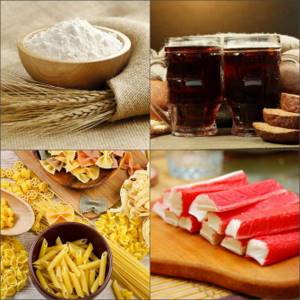
Wheat, rye, oats and all their derivatives are strictly prohibited on a gluten-free diet. The following products should not be consumed:
- wheat, including wheat flour;
- wheat cereals;
- semolina, artek, poltavka, bulgur, couscous, spelled;
- wheat starch, various additives including wheat protein, wheat-based thickeners;
- rye and all types of rye flour;
- kvass and beer;
- barley, including barley flour;
- barley cereals – pearl barley, barley;
- barley malt;
- products containing malt sugar - molasses, extract, vinegar, various flavorings;
- oats, including oat flour, flakes and grits;
- pasta;
- bakery products;
- whole grains;
- ice cream and yoghurts with a long shelf life;
- various canned foods: meat, fish, fruit, vegetables;
- crab sticks;
- sausages, sausages, smoked meats;
- semi-finished products;
- store-bought seasonings and spices;
- flavored tea bags;
- freeze-dried coffee;
- confectionery sweets;
- almost all ready-made sauces: mayonnaise, ketchup, mustard, and so on;
- bouillon cubes;
- soy sauce.
This list of products is not definitive. To be sure that a particular food contains gluten, you need to carefully study the composition presented on the product packaging. It is important to remember that the most important sources are wheat, barley, rye and all products containing them.
Gluten-free diet for weight loss

Recently, more and more often this diet is moving from the category of medicinal to the category of “weight loss”. It is believed that by giving up foods containing gluten, you can lose a few kilograms, but this is not entirely true. In fact, gluten-free products often turn out to be much higher in calories than those in which this protein is present. Of course, if you stop eating baked goods, buns, and sweet flour products, you can undoubtedly lose weight, but in addition to this, you should also adhere to some immutable rules:
- do not drink alcohol;
- do not eat oil or fat-containing foods;
- give up sugar and “simple” carbohydrates.
But such nutritional principles accompany any diet, not just gluten-free. Essentially, losing weight is directly related to eating a balanced diet, whether gluten-containing or gluten-free.
But we cannot hide the fact that now many experts who support healthy eating are advocating the abandonment of this protein. They believe that eating gluten-free foods will help you get rid of digestive problems forever and will be a wonderful prevention of intestinal permeability. At the same time, normal and stable functioning of the digestive system improves well-being, speeds up metabolism, which undoubtedly leads to weight loss.
According to reviews from those who have used this diet specifically for weight loss, it allows you to lose up to three kilograms in a week. But you should adhere to a proper diet and count calories. To achieve better results, its duration should be at least eight weeks.
If you decide to follow a gluten-free diet, then before you start, you should definitely consult with a nutritionist. In order to build a nutrition plan that suits you and create a menu that suits your lifestyle.
Weekly meal plan

Like any other diet, gluten-free takes some getting used to. The main thing is to tune in to a positive mood, and then the transition process will go unnoticed and painlessly. And the final result will be a good mood, stable functioning of the digestive system, as well as normalization and possible weight loss. To adhere to such a diet without significant discomfort, you can use the recommended sample menu for a week.
Monday
Breakfast:
- boiled fish;
- mashed potatoes;
- black or green tea.
Dinner:
- meatball soup;
- steam cutlets;
- rice porrige;
- seaweed salad.
Afternoon snack:
- rice cakes;
- fruit salad.
Dinner:
- side dish of vegetables;
- buckwheat pudding.
Tuesday
Breakfast:
- boiled meat;
- buckwheat porridge;
- black or green tea.
Dinner:
- vegetable salad;
- vegetable soup;
- fruit jelly or juice.
Afternoon snack:
- baked apples;
- nuts.
Dinner:
- boiled meat;
- rice;
- rosehip decoction.
Wednesday

Breakfast:
- cornflakes;
- low-fat cottage cheese;
- black or green tea.
Dinner:
- fish or seafood soup;
- buckwheat porridge;
- baked chicken fillet;
- black or green tea.
Afternoon snack:
- rice cakes;
- fruit jam;
- black or green tea.
Dinner:
- vegetable stew;
- gluten-free bread;
- low-fat kefir.
Thursday
Breakfast:
- Omelet with cheese;
- black or green tea.
Dinner:
- meatball soup;
- apple and celery salad;
- fruit juice.
Afternoon snack:
- fruit jelly;
- compote.
Dinner:
- side dish of vegetables;
- buckwheat pudding;
- green tea.
Friday
Breakfast:
- baked apples;
- low-fat cottage cheese;
- black or green tea.
Dinner:
- steam cutlets;
- béchamel sauce;
- chicken bouillon.

Afternoon snack:
- assorted fruits;
- green tea.
Dinner:
- mashed potatoes;
- steamed fish cakes;
- fruit juice.
Saturday
Breakfast:
- boiled fish;
- rice porrige;
- coffee with milk.
Dinner:
- low-fat chicken broth;
- side dish of vegetables;
- green or black tea.
Afternoon snack:
- gingerbread with nuts and apples;
- fruit juice.
Dinner:
- boiled meat;
- buckwheat porridge;
- kefir.
Sunday
Breakfast:
- low-fat cottage cheese;
- fruit platter;
- black or green tea.
Dinner:
- meatball soup;
- pilaf with lean meats;
- vegetable salad;
- fruit juice.
Afternoon snack:
- fruit juice or jelly;
- nuts.
Dinner:
- side dish of vegetables;
- buckwheat pudding;
- black or green tea.
Proper nutrition means eating at least four times a day. You can use rice cakes, kefir, fermented baked milk, and fruits as snacks. Also relevant for weight loss is the ban on eating after six in the evening. By following this menu, you can lose about 3 kg in a week.
Recipes
The gluten-free diet is quite varied and may include pancakes and pancakes with kefir or milk, and fruit cookies. Not in all cities it is possible to purchase special food; in this case, using available products (rice, corn and buckwheat, flaxseed), you can use a coffee grinder to prepare flour for products from them. You can bake corn bread and corn tortillas with herbs, cheese and garlic, pancakes and pancakes from different types of homemade flour with kefir or milk. They can be served with sour cream, or they can be stuffed with meat or mushrooms.
Gluten-free diet recipes from available products. First meal
Cauliflower soup
Place chopped potatoes into the meat broth and simmer for 10 minutes. Then add cabbage, disassembled into inflorescences, grated carrots and chopped onions. After 5 minutes, add chopped tomatoes. At the end, add chopped garlic and any herbs.
Second courses
Cheesecakes made from corn flour
Beat the eggs and combine with cottage cheese, mix, add corn flour until you get a dough from which you can form products. Add raisins (apples if desired), make cheesecakes, fry with a small amount of vegetable oil.
Liver pancakes
Grind the raw liver through a meat grinder, add onion fried in vegetable oil, grated raw potatoes. Add salt, pepper, cornmeal and stir. Place the pancakes with a spoon, giving them the desired shape, in a frying pan with vegetable oil. You can bake them in the oven.
Dessert
Carrot cake with sour cream
Take 2 cups of grated carrots, 2 tbsp. corn flour, 0.5 tbsp. sugar, 2 eggs, 1 tsp. soda Mix all ingredients, lastly add beaten eggs. Divide the resulting dough into 2-3 cake layers (depending on the size of the mold). Bake on parchment paper. Grease the finished cakes with sour cream or jam.
Pumpkin cupcake
Peel the pumpkin, cook in milk until tender, rub, add beaten egg, sugar, soda and corn flour to make a pancake-like dough. Place it in a mold and bake.
Pros and cons of a gluten-free diet
Undoubtedly, the fact that the diet consists of fairly simple and healthy products allows you to tolerate it painlessly. In addition, it has a number of useful medical indications:
- normalizes intestinal microflora;
- promotes the removal of dangerous and harmful toxins;
- useful in baby food, since gluten foods cause increased gas formation and colic in babies.
One of the main and significant disadvantages of a gluten-free diet is the lack of vitamins and minerals. Therefore, while adhering to such a diet, you should definitely introduce into your diet foods rich in vitamins, especially group B, iron, calcium and fiber.
Best materials of the month
- Coronaviruses: SARS-CoV-2 (COVID-19)
- Antibiotics for the prevention and treatment of COVID-19: how effective are they?
- The most common "office" diseases
- Does vodka kill coronavirus?
- How to stay alive on our roads?
The sensitive issue of slimness
By eliminating gluten-containing foods, weight loss is possible. Why?
The answer is simple - the lion's share of such food is classified as high-calorie and difficult to digest.
For an organism with a slow metabolism and problematic digestion, it is recommended to keep this food to a minimum. And the gluten-free diet promotes precisely this technique.
The diet is now formed by healthy products, mainly farmed and natural, promoting a healthy metabolism.
However, the nutrition plan and food volumes are also important. After all, some foods (especially fat-containing ones) allowed by the diet are also high in calories.
For a weight loss effect, you need to control their consumption. These include nuts, cereals, flour, and natural sweeteners such as honey.
Gluten-free diet reviews
According to many reviews, this diet is useful not only for celiac disease, but also helps solve a number of other problems. For example, switching to a gluten-free menu makes it easier to tolerate, and sometimes even get rid of, the symptoms of seasonal allergies. Eating gluten-free foods relieves gastrointestinal problems and improves the condition of facial skin. Some note normalization of weight, and an increase in energy and emotional activity. In general, reviews of this diet are positive. Moreover, both reviews from medical workers and reviews from patients who adhere to such a diet in their lives. But, unfortunately, few people succeed in losing a few kilograms without eating gluten-containing foods. To lose weight, it is better to turn your attention to more effective ones that are used specifically for losing excess weight, such as the keto diet, paleo diet or Mediterranean diet.
conclusions
A gluten-free diet is a vital remedy for people suffering from autoimmune diseases, as well as some neuropsychiatric diseases. In terms of weight loss, such a diet can be useful in that it prohibits the consumption of sweet pastries, bread and various confectionery products. After all, if you give up such products, you can really lose a few kilograms. But in principle, for people who do not suffer from the above diseases, such a diet will not give anything. To lose weight, it is better to opt for some other diet or simply adhere to a healthy lifestyle and diet. Chasing fashion trends does not always lead to good results.
More fresh and relevant information about health on our Telegram channel. Subscribe: https://t.me/foodandhealthru
We will be grateful if you use the buttons:
Power characteristics
A gluten-free diet is considered complete - by following it, a person receives all the necessary elements and substances to maintain the body in a healthy state.
The diet is characterized by a high content of calcium salts and protein, as well as increased nutritional value. The diet is chemically and mechanically gentle.
There are two options: one is intended for patients who are overweight, and the second for those people who are of normal weight.

All dishes must be prepared either steamed or boiled. Depending on the functional state of the intestines, food needs to be wiped or crushed. If the patient has normal stool, then this is not required. During the period of stable remission, light frying and baking are completely allowed.
Following a gluten-free diet involves a split diet - small portions 5-6 times a day.
Food temperature should vary between 57–62 °C. If this is a cold dish, then its minimum allowed temperature is 15 °C. You should not eat anything excessively hot or ice-cold.
And finally, daily data on the energy value of a gluten-free diet:
- Proteins – 100-120 g.
- Carbohydrates – 400-450 g.
- Fats – 100-110 g.
- Table salt – 6-7 g.
- Liquid – 1.5 l.
Daily caloric intake should be between 2940–3270 kcal.


